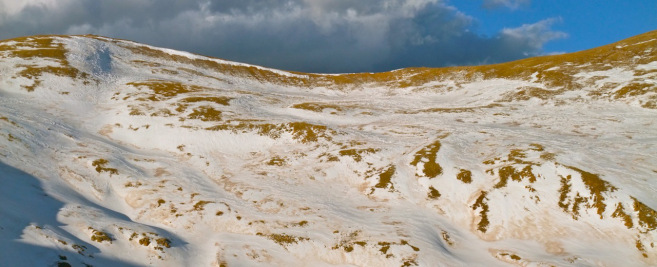 If you're skiing at Copper Mountain this week and the snow looks pinkish-orange, you don't need to check your goggles. The tint is the result of a March 30 windstorm that dropped tons of desert dust on the Colorado mountains. Cars that were parked outside were covered with visible coating of the reddish dust, like after a Moab road trip.
If you're skiing at Copper Mountain this week and the snow looks pinkish-orange, you don't need to check your goggles. The tint is the result of a March 30 windstorm that dropped tons of desert dust on the Colorado mountains. Cars that were parked outside were covered with visible coating of the reddish dust, like after a Moab road trip.
The dust storms have become more common in recent years. Instead of seeing one every three to five years, there are now multiple storms each year, and the depositions are having a big effect on Colorado's water supply.
The darker-colored snow absorbs more heat and the snow melts much faster as a result, scientists say. By some estimates, peak runoff can pushed forward by as much as two weeks in years when there are thick layers of dust in the snow. Since the particles are heavier than air, they don't evaporate as the snow melts. Instead, the dust builds up into ever-greater concentrations, darkening the snow even more.
Dust storm layers have also been implicated in dangerous backcountry avalanches. The darkened surface of the snow may melt faster, but it also freezes back into a harder crust when the temperatures drop below 32 degrees, making it harder for any subsequent new snow to stick.
Most of the dust comes from the Four Corners area. The region has been in drought for the past seven years, so the dry soil just blows away and ends up in the Rockies. Increased development of dirt roads for fossil fuel development, as well as unsustainable grazing practices have also been implicated in the rising levels of dust.
Globally, dust transport is an important part of nutrient cycles. Dust blowing off the Sahara, for example, falls into the Caribbean, where it provides nutrients for plankton.
Filed in Colorado News | Copper Mountain News | Environment |